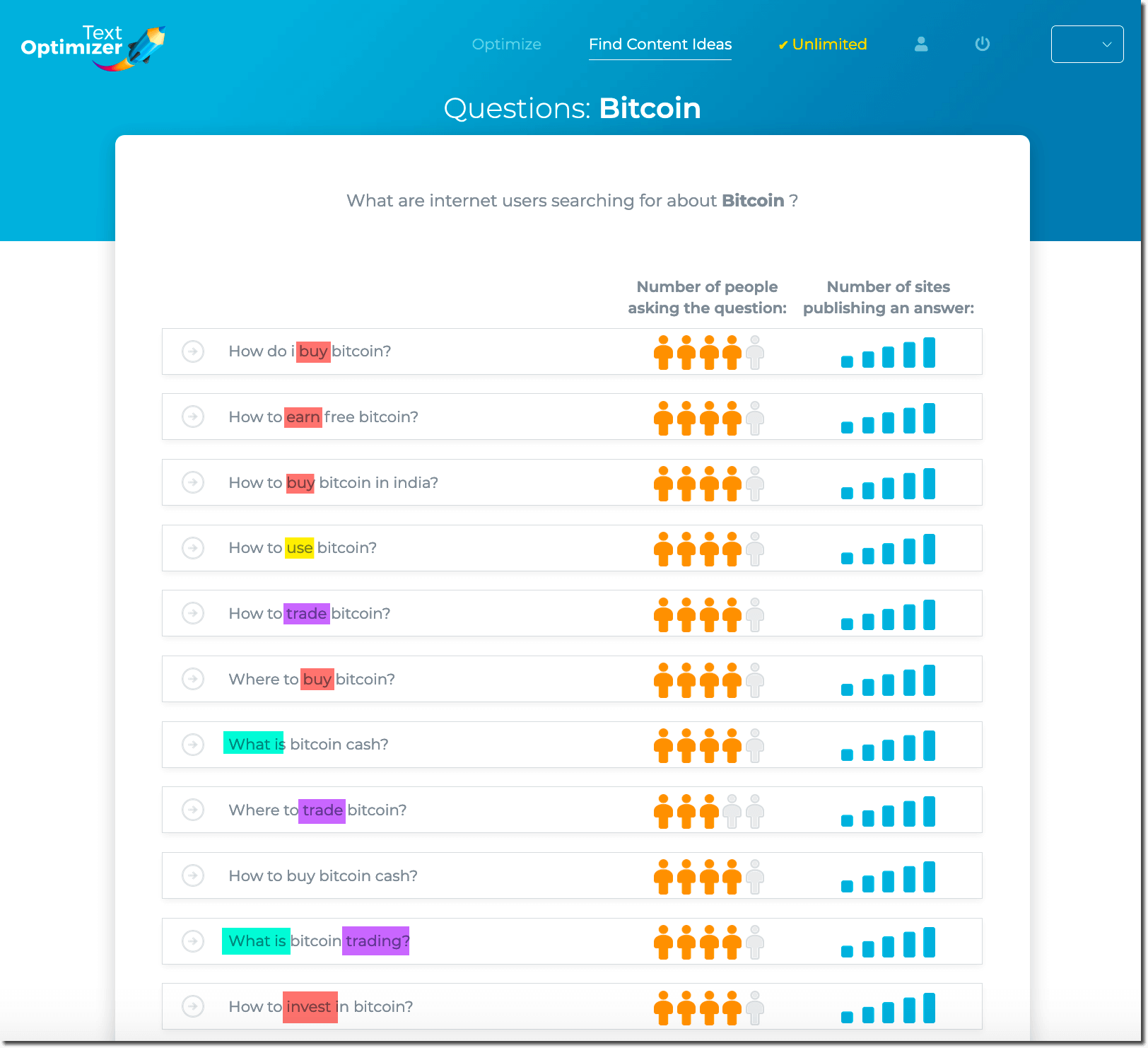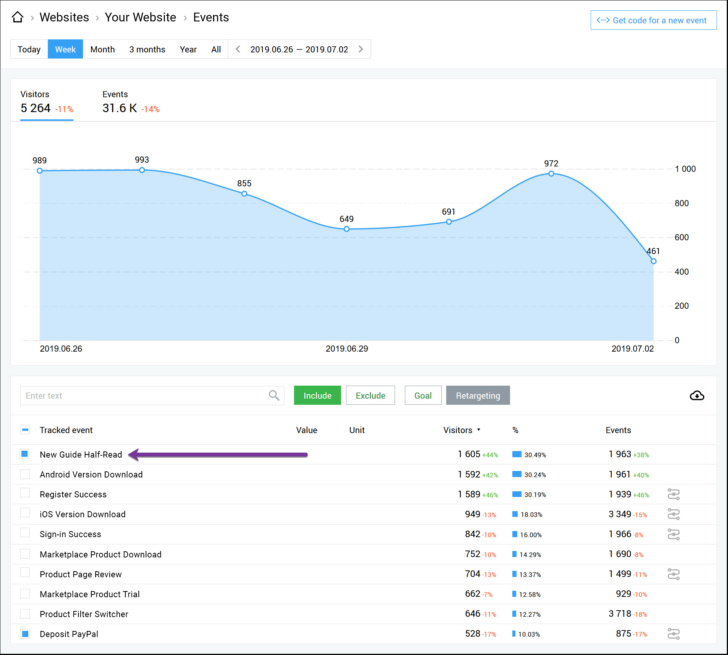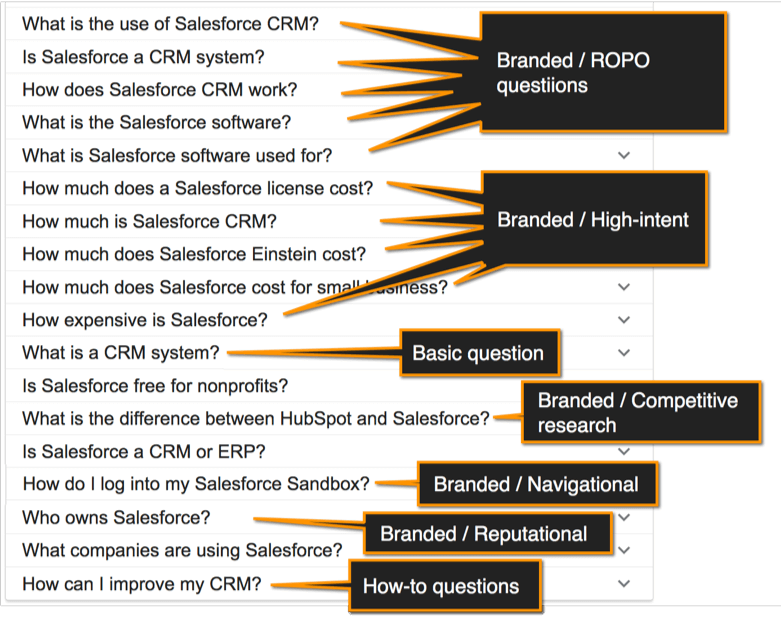Google’s “People also ask” boxes are widely discussed within the SEO industry as they take a lot of SERP real estate while providing little to no organic visibility to the publishers’ sites.
That said, “People also ask” listings are probably helpful for Google’s users allowing them to get a better understanding of a topic they are researching. Yet, whether they do send actual clicks to publishers’ pages remains a huge question.
While we have no power over Google’s search engine page elements, our job as digital marketers is to find ways to take any opportunity to boost our clients’ organic visibility.
Is there any way for marketers to utilize this search feature better? Let’s see.
1. Understand your target query intent better
One of the cooler aspects of “People also ask” boxes is that they are dynamic.
When you click one question, it will take you in a new direction by generating more follow-up questions underneath. Each time you choose, you get more to choose from.
The coolest thing though is that the further questions are different (in topic, direction or intent) based on which question you choose.
Let me explain this by showing you an example. Let’s search for something like – “Is wine good for your blood?”
Now try clicking one of those questions in the box, for example, “What are the benefits of drinking red wine?” and watch more follow-up questions show up. Next, click a different question “Is red wine good for your heart and blood pressure?”. Do you see the difference?

Source: Screenshot made by the author, as of Feb 2020
Now, while this exercise may seem rather insignificant to some people, to me, it is pretty mind-blowing as it shows us what Google may know of their users’ research patterns and what may interest them further, depending on their next step.
To give you a bit of a context, Google seems to rely on semantic analysis when figuring out which questions fit every searcher’s needs better. Bill Slawski did a solid job covering a related patent called “Generating related questions for search queries” which also states that those related questions rely on search intent:
Providing related questions to users can help users who are using un-common keywords or terminology in their search query to identify keywords or terms that are more commonly used to describe their intent.

Source: Google patent
For a deeper insight into the variety of questions and types of intent, they may signal, try Text Optimizer. The tool uses a similar process of extracting questions Google does. For example, here are intent-based questions that refer to the topic of bitcoin.

Source: TextOptimizer’s search screenshot, as of Jan 2020
2. Identify important searching patterns
This one somewhat relates to the previous one but it serves a more practical goal, beyond understanding your audience and topic better. If you search Google for your target query enough, you will soon start seeing certain searching patterns.
For example, lots of city-related “People also ask” boxes will contain questions concerning the city safety, whether it is a good place to live in and what it is famous for:

Identifying these searching patterns is crucial when you want:
- Identify your cornerstone content
- Re-structure your site or an individual landing page
- Re-think your site navigation (both desktop and mobile)
- Create a logical breadcrumb navigation (more on this here)
- Consolidate your multiple pages into categories and taxonomies
3. Create on-page FAQs
Knowing your target users’ struggles can help in creating a really helpful FAQ section that can diversify your rankings and help bring steady traffic.
All you need to do is to collect your relevant “People also ask” results, organize them in sections (based on your identified intent/searching patterns) and answer all those questions on your dedicated FAQ page.
When working on the FAQ page, don’t forget to:
- Use FAQPage schema to generate rich snippets in Google search (WordPress users can take advantage of this plugin). If you have a lot of questions in your niche, it is a good idea to build a standalone knowledge base to address them. Here are all the plugins for the job.
- Set up engagement funnels to keep those readers interacting with your site and ultimately turn them into customers. Finteza is a solid option to use here, as it lets you serve custom CTAs based on the users’ referral source and landing page that brought them to your site:

Source: Screenshot by Finteza, as of July 2019
4. Identify your competitor’s struggles
If you have an established competitor with a strong brand, their branded queries and consequent “People also ask” results will give you lots of insight into what kinds of struggles their customers are facing (and how to serve them better).
When it comes to branded “People also ask” results, you may want to organize them based on possible search intent:
- ROPO questions: These customers are researching a product before making a purchasing decision.
- High-intent questions: Customers are closest to a sale. These are usually price-related queries, for example, those that contain the word “reviews”.
- Navigational questions: Customers are lost on your competitor’s site and need some help navigating. These queries can highlight usability issues for you to avoid when building your site.
- Competitive questions: These queries compare two of your competitors.
- Reputation questions: Those customers want to know more about your competitor’s company.

Source: A screenshot made by the author in January 2020
This information helps you develop a better product and a better site than those of your competitors.
Conclusion
With the changes in search algorithms over the years, the dropping and adding of key search elements, the evolution of Google’s SERPs, navigating digital marketing trends seems almost treacherous.
Yet, at the core of things, not much has really shifted and much of what we do remains the same. In fact, some of those changes have made it even easier to make an impact on the web than ever before. While we may welcome or frown upon each new change, there’s still some competitive advantage in each of them.
Our job, as digital marketers, is to distinguish that competitive advantage and make the most of it.
I hope the above ideas will help you use “People also ask” results to your advantage.
Ann Smarty is the Brand and Community manager at InternetMarketingNinjas.com.
The post How to make the most of Google’s “People also ask” results appeared first on Search Engine Watch.

